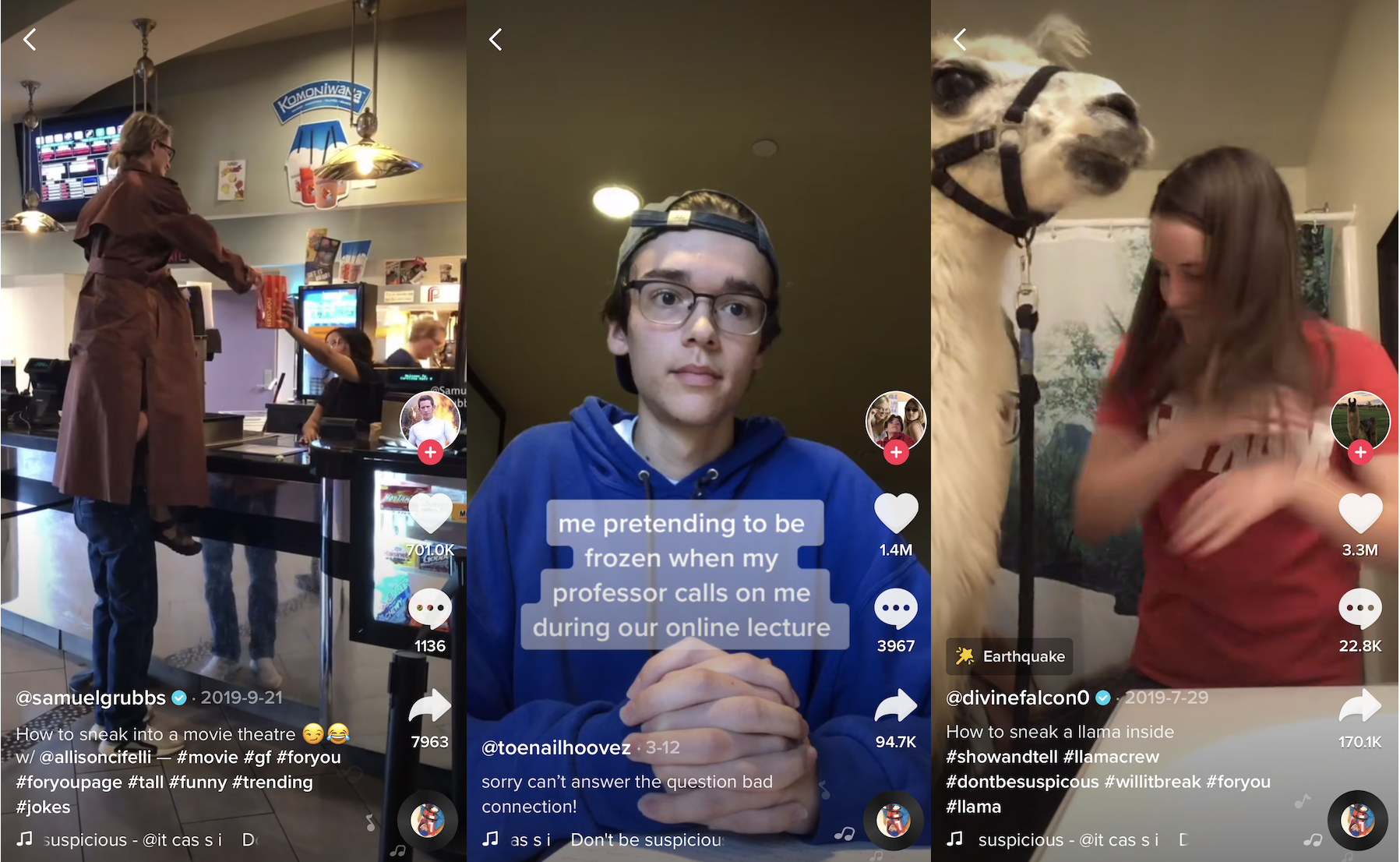Jason Shen is a three-time startup founder and the CEO of
Midgame, a gaming technology company backed by Techstars and Betaworks.
It’s no secret that adaptability has become a critical trait for knowledge workers. To stay on top of a rapidly evolving world, we must assess new situations, make intelligent decisions and implement them effectively.
A 2014 research report by Barclays indicated that 60% of employers say adaptability has become more important during the last decade, and BBC called adaptability the “X factor” for career success in an era of technological change.
But even the most intrepid executive, entrepreneur or freelancer would be forgiven for struggling to adapt to a global pandemic. The impact of coronavirus has been unrelenting: hospitals at capacity, students sent home, conference cancellations, sold out inventory, markets in free fall and cities under lockdown.
Whatever you thought 2020 was going to look like, you were dead wrong. Box CEO Aaron Levie and Stanford professor Bob Sutton’s recent Twitter exchange said it all:
This moment requires us to learn new skills, develop new habits and let go of old ways of working. In the book “Range,” there’s a chapter about “dropping familiar tools” that details how experienced professionals will overlearn specific behavior and then fail to adapt to a new circumstance. This mentality affected everyone from firefighters to aviation crews to NASA engineers, often with deadly results, and underscores how hard it can be to adapt to change.
To help us cultivate adaptability in this unprecedented moment, I sought answers in unexpected places. Here’s what I learned.
Let go of your attachments
Adaptability is required first and foremost when circumstances change. It’s easy to get attached to certain outcomes, especially when they’ve been planned long in advance or have significant emotional weight.
Due to coronavirus, a couple I know is postponing their wedding originally set for April. Having tied the knot only a year ago myself, I can’t imagine how frustrating that must be for them. But it was the right decision; demanding that the show go on would have been dangerous for their families, friends and the public at large.
I recently spoke with my friend Belinda Ju, an executive coach with a longstanding meditation practice. Non-attachment is a core concept of Buddhism, the spiritual path she’s followed for many years, and I wanted her thoughts on how that idea might help us adapt to unforeseen circumstances.
“Attachment doesn’t work because certainty doesn’t work. You can’t predict the future,” she explained. Being attached to something means “seeing the world through a false lens. Nothing is fixed.” For Ju and her clients, non-attachment doesn’t mean giving up on goals — it means focusing on what you can control.
“You might have a fixed goal of needing to raise X million dollars to keep your team afloat,” she said. “But in the age of coronavirus, investors might be slower to respond. So what are the levers in your control? What are the options you have and the pros and cons to each one?”
Her points hit home for me. As a NYC-based startup founder, I was preparing to make several trips to the West Coast to raise the next round for my company, Midgame, a digital party host for gamers.
I like pitching in person, but that’s obviously not going to happen, so I need to embrace video calls as my new reality. By doing that, I can get to stocking up on coffee, cleaning up my work space and setting up a microphone so when I do pitch over video, I’m bringing my A game.
Be present
Another way to think about adaptability is that it’s the ability to improvise. In theater, improv performers can’t rely on prewritten lines, and have to react in real time to suggestions from the audience or the words and actions of their scene partners.
“ ‘Playing the scene you’re in’ is a principle from improv which means to be present to the situation you’re in.”
That’s what Mary Lemmer told me. As an entrepreneur and VC who spent a stint at The Second City improv theater in Chicago, Lemmer knows a thing or two about having to adapt. Today, she brings her insights to corporations through training and workshops.
She explained that as an improv performer, you may start a scene with a certain idea in mind of how it will go, but that can quickly change. “If you’re not present,” she said, “then you’re not actively listening and because there’s no script, you’ll miss details. That’s when scenes fall apart.”
When I was a PM at Etsy and we had a major launch, we’d get engineering, dev ops, product, marketing and customer support together in a room to talk through the final event sequencing. These weren’t always the most exciting meetings and it was easy to get distracted by email or chat. One time engineering announced a significant last-minute issue that almost slipped through the cracks. Luckily, someone piped up with a clarifying question and we were all able to work together to minimize the issue.
Lemmer argues that in improv, like in business, you can’t make assumptions about people or situations. “We see this a lot in board meetings. People start to assume ‘Sally’ will always be the proactive one or ‘Jim’ will always be the naysayer and tune out.”
This is kind of attitude is problematic in a stable environment, but downright dangerous in an unstable situation where new data and events can quickly open up a new set of challenges and opportunities.
Early on, some experts thought the coronavirus crisis would stabilize globally by April. In early February, S&P Global stated that in the “worst-case scenario,” the virus would be contained by late May. A month later, that prediction already looked wildly optimistic.
Build mental toughness
Experts are saying now that cases may peak in May or June, which means everyone should be hunkering down for eight or more weeks of social distancing and isolation. A COVID-19 vaccine just started human trials, but testing in large enough sample sizes to identify side effects and then ramping up large-scale production still might not be fully available for more than a year.
In other words, dealing with this virus is not a sprint, it’s a marathon. A marathon no one signed up for.
Someone who knows a lot about this topic is Jason Fitzgerald. A 2:39 marathoner, Fitzgerald now helps people run faster and healthier as an author and coach.
When we spoke over the phone, he pointed out that running, unlike say basketball or gymnastics, is a sport where “you have to voluntarily want to experience more and more discomfort.”
Fitzgerald calls this ability to endure “mental toughness,” and it’s a skill we all can build. For runners, it requires doing workouts that scare them, putting in mileage that’s higher than they have in the past and racing regularly. It’s also about accepting and even embracing the pain of running hard.
The same is true for adaptation. We can train ourselves to respond better to change (we’re all getting lots of practice right now!), but developing new habits and working in new ways is always uncomfortable. As decorated cyclist Greg LeMond once said, “it doesn’t get easier, you just get faster.”
We also have to recognize that we won’t get it right every time. “The more that we get comfortable with poor performances, the more we can learn from them,” Fitzgerald said, noting that he’s had his share of bad races, including failing to finish an ultramarathon in 2015. “Sometimes you dwell on a bad race for a couple days, but then you have to just forget about it and move on with your training.”
Many of us are reeling from more cancellations, suspensions and complete one-eighties in the last month than in the last five years. But we can’t let ourselves stay bogged down by our feelings of frustration or disappointment. We accept our new reality, learn what we can from it, and keep going.
It’s clear that the people who can let go of their past plans and embrace the new environment ahead will thrive. Already we’re seeing companies pivot from live events to online webinars, and remote-first workplaces becoming the new normal. Shares of Zoom have risen even as the stock market has taken a beating and I’m sure other winners will emerge in the coming weeks and months.
But adaptability doesn’t just matter for individuals or even companies, it matters for governments. For China, Taiwan and Hong Kong, thanks to aggressive testing and quarantining efforts, life is returning, somewhat, to normal. New cases are on the decline and there’s hope of life returning to normalcy in the near future. Countries that bungled their response to the disease progression, including Italy, Spain, the U.K. and the United States, are now facing increasingly dire consequences.
Whether you want to survive a global pandemic, reach the next phase in your career or be selected on a mission to Mars, it’s hard to overstate the importance of adaptability in getting there.


Source: Tech Crunch











